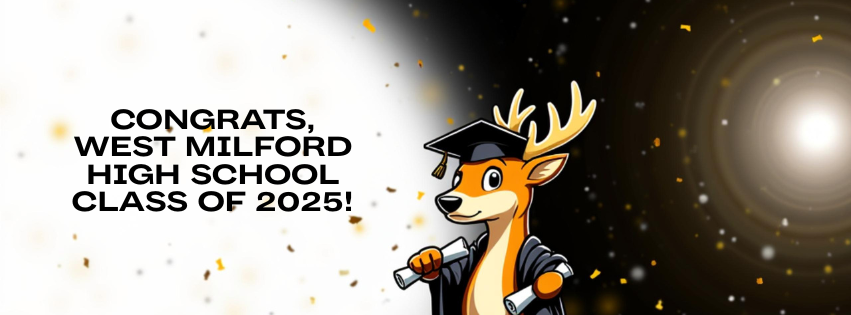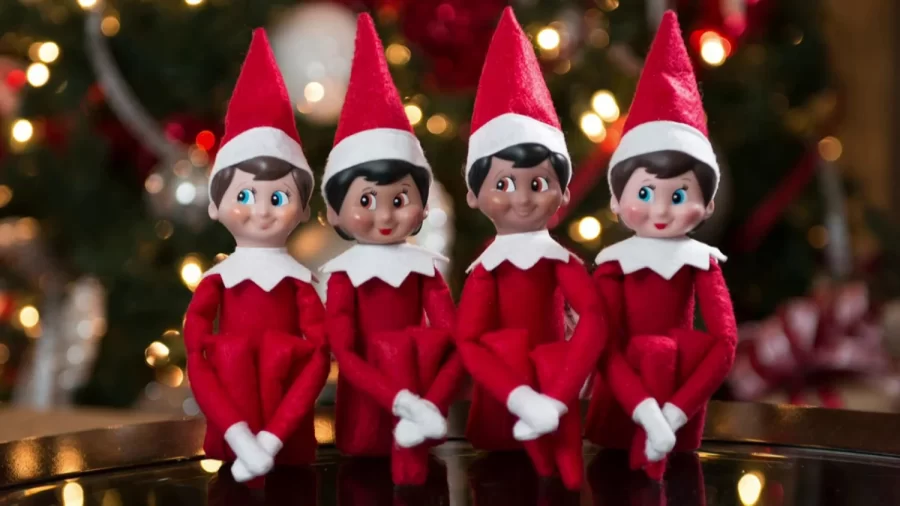What’s the deal with the Elf on the Shelf, anyway?
This and the questioning of other odd Christmas traditions answered
We all know what Christmas looks like–the stockings above the fireplace, the wreaths hung on doors, and of course the beautifully decorated Christmas trees. We all know the Christmas staples, but have you ever taken a second, stepped back and wondered why we take the time to celebrate these little traditions?
Elf on the Shelf
The current tradition of Elf on the Shelf has only been around for 18 years, but quickly became a staple within children’s lives. The little elf comes in a box along with a book about the elf’s backstory. The book describes how the elf is an informant for Santa, letting him know whether children had been naughty or nice and now they will be reporting to Santa about the people in your home. This newer tradition was shared with the world in 2005 with the book “Elf on The Shelf: A Christmas Tradition” by Carol Aebersold, but it dates back to the 1970’s with Aebersold’s own family traditions. “We had an elf growing up for as long as we can remember. Our elf was named Fisbee, and Fisbee of course would report to Santa Claus at night and be back in a different position in our house the next day,” Christina Pitts, Aebersold’s daughter, told Huffpost (https://www.huffpost.com/entry/the-elf-on-the-shelf-history). Originally their elf had been merely an ornament on the tree, but evolved into a doll that would change its location each day, causing the kids to wake up with excitement trying to find out where the elf had been hiding that day. Eventually Aebersold’s daughter pitched a book about Elf on the Shelf which was published in 2004. The elf only began to grow traction in 2007 when Jennifer Garner, a well known actress at the time, was seen photographed with the toy. Over the years the tradition continued to grow and is still very popular with children.
Hanging Stockings
The hanging of stockings by the fireplace has become one of the most popular Christmas traditions there is, but the act itself is odd. Hanging socks over the fireplace and hoping they get filled with random toys or food isn’t something people typically do, so what started this seemingly strange Christmas tradition? Its origins are traced to a Christmas myth. Though no one knows when the myth first popped up, it is still attributed to the creation of the practice. The story goes that a widowed father of three daughters had no money to pay for the dowry to get them married. Santa himself had gone through the town and heard about the family’s troubles and decided to help them out. He entered their house through the chimney and put gold coins inside of the socks of each girl, socks that happened to be drying above the fireplace (https://www.smithsonianmag.com/arts-culture/the-legend-of-the-christmas-stocking). The idea stuck and people began to place their socks above the fireplace, specifically picking the largest ones to fill with the most coins. Overtime, companies began making large socks specifically for Christmas, which are the making of modern day stockings.
Mistletoe
Though more simplistic than other traditions, mistletoe has a fairly uncertain origin that can be traced back to several different sources. One tells of a Norse myth about Baldur, the grandson of Thor.The story goes that Baldur had awoken with an unbearable fear that every living thing on Earth had wanted to kill him. His mother Frigga, goddess of love, had known all the creatures and forced them to swear under oath that they would not hurt him. Unfortunately, they had forgotten the plant mistletoe and Loki, the god of mischief, heard of this and devised a plan. He made an arrow made out of mistletoe and shot it through his chest, effectively killing him. To mourn his death Frigga declared we must remember Baldur and spread love, and this would be the reason we hang and kiss under the mistletoe (https://www.smithsonianmag.com). Others attribute the tradition to priests, who believed mistletoe to be a holy plant since it didn’t grow from the ground. To honor the plant they would not be allowed to touch the ground so they’d hang it up in doorways to call for good luck. Some just believe it to be a superstition that if you were caught under the mistletoe, a kiss would ensure marriage and fertility in the future (https://www.almanac.com/why-do-we-kiss-under-mistletoe).
Gingerbread Houses
The cute little gingerbread houses children tend to make during Christmas have a darker origin than people may have guessed. It first began in the 1600’s, just shortly after the baked good had been introduced, when people started to build houses with gingerbread. One famous story comes from Queen Elizabeth hiring a gingerbread maker for one of her banquets, ordering him to make gingerbread men representing all the guests she had invited (https://time.com/4602913/gingerbread-men-history/ ). They continued to rise in popularity in the 1800’s, but most notably in 1812, when an infamous tale closely related to the holiday desert was first published. The Brothers Grimm fairytale of “Hansel and Gretel” tells the story of a brother and sister who get lost in the woods and find themselves a trail of treats which lead to a house full of sweets and desserts. The hungry children quickly eat the house piece by piece until a witch comes and reveals it had all been a trap and that she lured the kids towards the house to kill them. Despite the dark story, the tradition took off and many people still build gingerbread houses to this day.
Christmas Trees
Arguably the most notable Christmas tradition of them all would be the Christmas tree. Although it is a staple of the holiday, not many people know how this tradition started. These trees have several different origins starting in different parts of the world before Christmas even truly became a holiday. Before Christianity, pine trees already had a special meaning to the world. In the past, any plant that remained green all year around had been important, causing people to bring them inside their homes to decorate them. They served as a reminder that life would grow back again and also the trees were commonly believed to ward off illness and evil spirits. Many different religions used pine trees as a way to worship gods far before Christianity. Ancient Egyptians believed these trees showed triumph over death as one of their gods, God of the Sun Ra, would recover from his illness and the evergreens staying alive through the winter had been their proof of it. Romans would decorate their homes and temples with pine boughs since they believed they represented agriculture and their god Saturnalia. Vikings attributed them to the god Baldur and believed they symbolized eternal life. It only began to more commonly be known with Christianity around the 16th century in Germany, where it had been known as a way to worship the day, and had been brought to America by German settlers in the 1740’s. Originally the tradition had been seen as odd and people were commonly criticized for making a mockery out of such a serious holiday. Christmas trees later grew in popularity in 1846, as the popular Queen Victoria had been illustrated standing by the Christmas tree with her family. This caused an influx of people suddenly participating in the holiday tradition. By the 1900’s, the tradition evolved into people decorating their trees with ornaments and lights, while German-Americans had stuck to the original decorations of nuts and apples to decorate the tree. The tradition has since evolved into the more recent take of the addition of tinsel, tree toppers, and bells.
Christmas and its traditions have changed for years. Originally starting with a more bare and somber look to one that is now colorful and full of life. Even today we still add new traditions or simply change up the old ones for the better. I personally cannot wait to see how Christmas looks 20, 30 or even 50 years from now. Hopefully, it’s as or even more beautiful than it is now.


